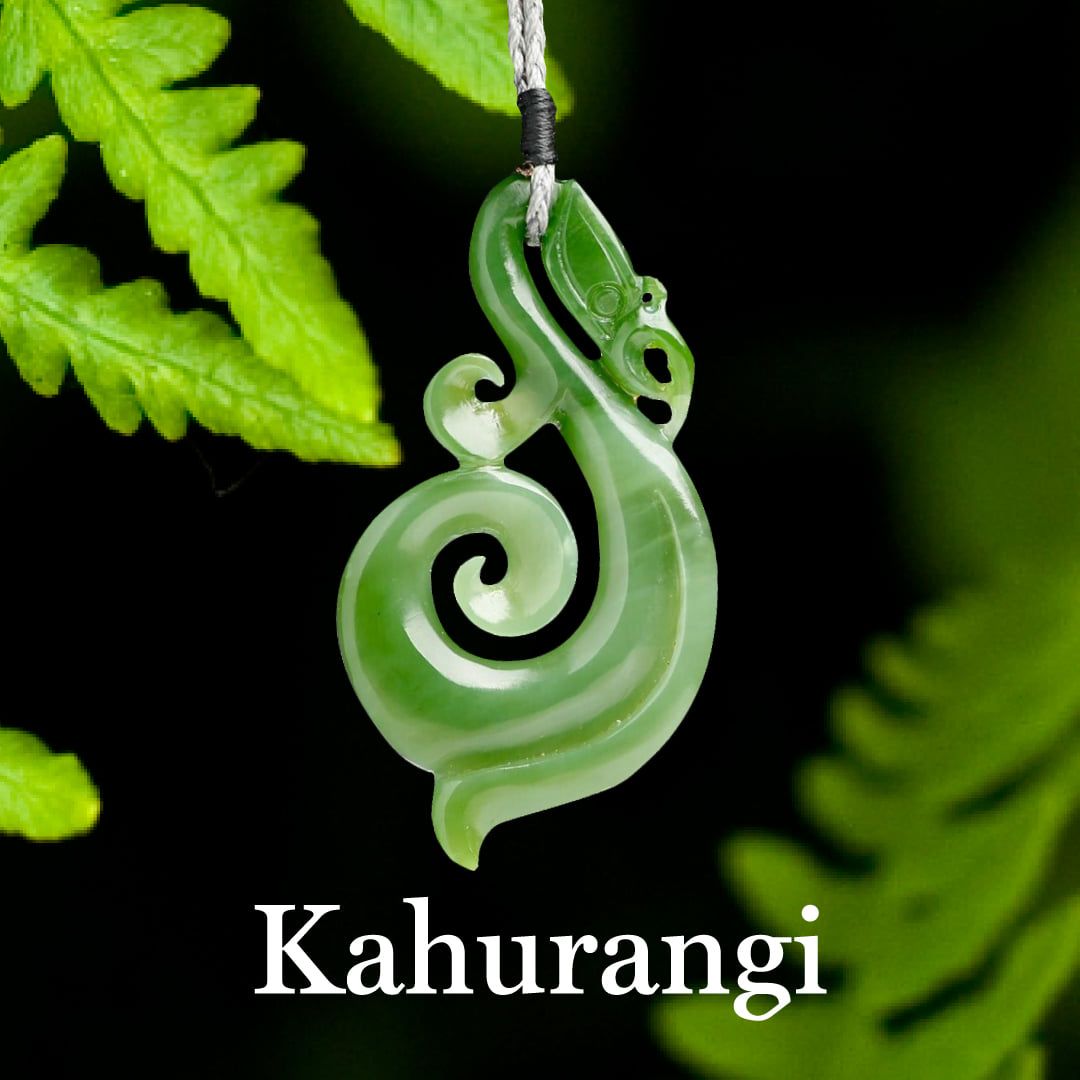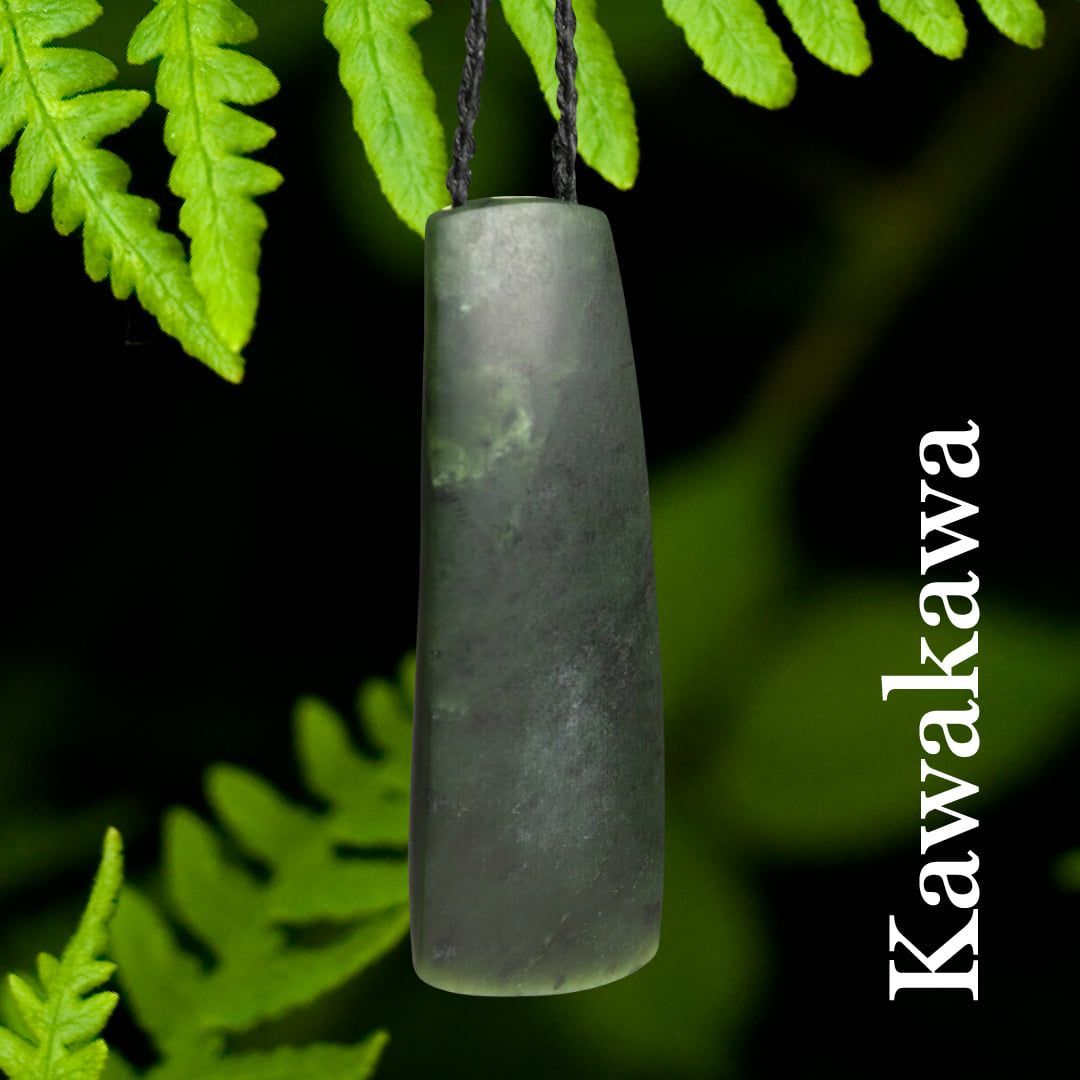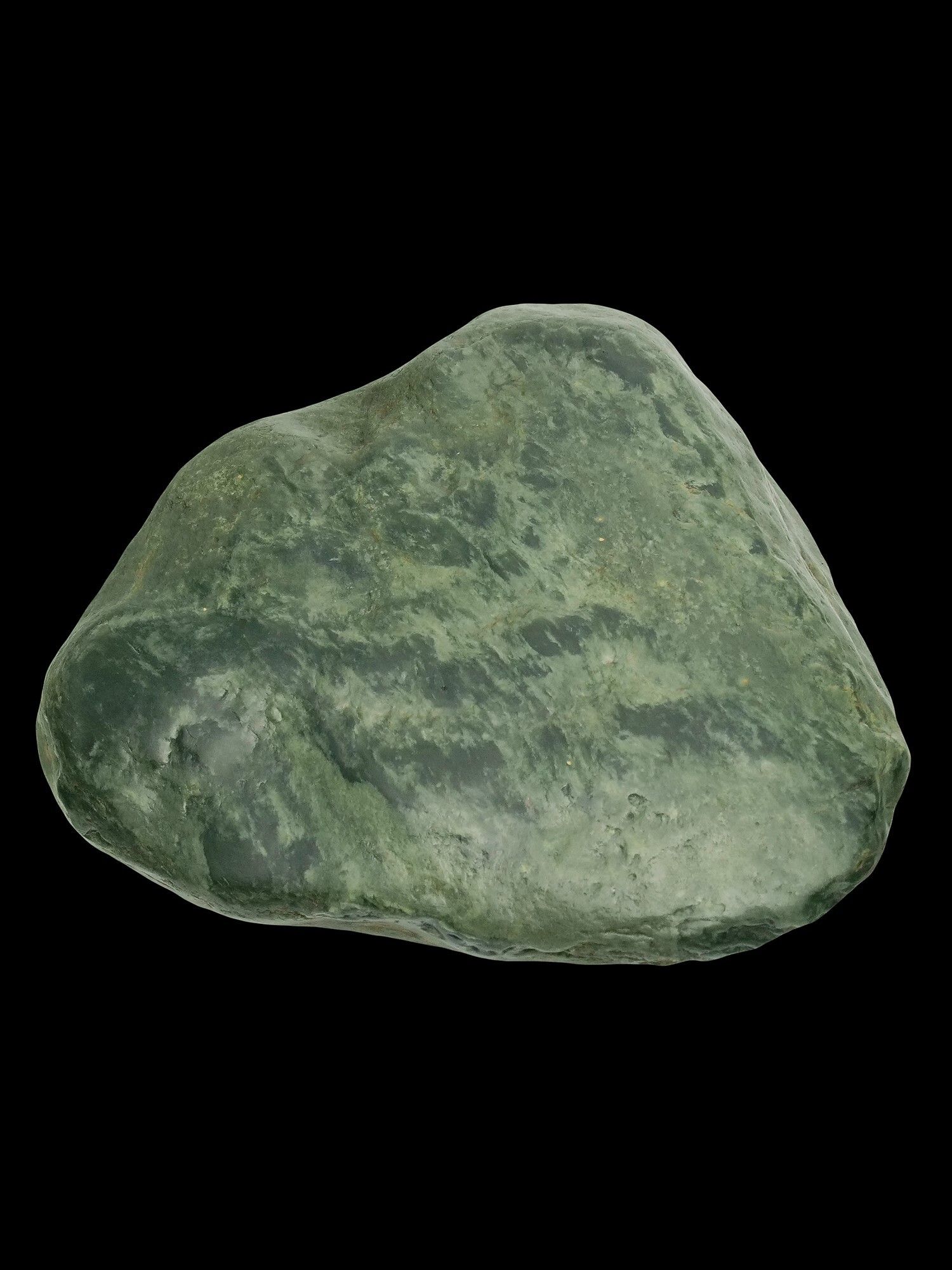Frequently Asked Questions about Pounamu

What is Pounamu?

The Māori word pounamu, also used in New Zealand English, refers to two main types of greenstone valued for carving: nephrite jade, classified by Māori as kawakawa, kahurangi, īnanga, and other names depending on colour; and translucent bowenite, a type of serpentine, known as tangiwai. The collective term pounamu is preferred, as the other names in common use are misleading, such as New Zealand jade (not all pounamu is jade) and greenstone (a generic term used for unrelated stone from many countries). Pounamu is only found in New Zealand.
Do you have a greenstone shop?
Yes, we have a greenstone shop in Durham Street Christchurch, just over the road from the Christchurch Casino. We are open 7 days a week and welcome visitors to Aotearoa NZ, or kiwis who would like to find out more about pounamu and its meaning, as well as shop for a meaningful gift.
Is there a difference between jade and greenstone?
Jade is an international term which refers to nephrite stones which can be found in various parts of the world. Greenstone or pounamu is a word given to types of stone (which can be nephrite, bowenite or serpentine) only found in Aotearoa New Zealand.
Is greenstone only found in New Zealand?

Yes. While greenstone is a term partly used to describes stone (nephrite) that’s also found in other parts of the world, Pounamu is unique to New Zealand.
Is darker or lighter greenstone better?
We don’t believe there’s such a thing as “better” stone, because the qualities and colours of each stone are unique and special to different people for different reasons. Check out our blog on the colours of pounamu to learn more about the differences in colour.
How can you tell raw pounamu?

To the untrained eye, pounamu doesn’t appear differently to other rocks. It’s often covered in a milky substance, and since it’s only found in very specific places in the South Island, it’s a rarity to find a piece. Occasionally water worn rocks like the one pictured have been found in the riverbed.
Is pounamu a type of jade?
Technically, no. But they’re similar. Pounamu is a Māori word that refers to stones only found in New Zealand which are mainly of the nephrite variety, but also include some bowenite and serpentine. Jade is nephrite and can be found in other parts of the world too.
What does pounamu mean in English?
Pounamu is a word used to describe greenstone, the colour green, and glass bottles (which historically were all green like greenstone).
How much does real pounamu cost?
This is a question that is impossible to answer clearly! So, let us help you understand why. Unlike precious metals which can be melted down into their pure form and sold by the gram, gemstones and semi-precious gemstones like pounamu cannot be. They also come in varying states of colour, density and forms which affects their overall appearance. Traditionally, some types of greenstone are considered more valuable and rarer than others but nowadays this is quite subjective. Then of course we have to factor in the artistry and time taken to carve greenstone into something someone might consider beautiful and valuable. Greenstone pendants can vary from being a few dollars to several hundred dollars. It really all depends on all the factors above.
What colour pounamu is the most expensive?
Generally speaking, the quality of the stone is what determines its value. This is of course subjective, but there are qualities - which can occur in many different colours of stone - that are more sought after than others. These can include density (so that it is more easily able to be carved with greater detail) and rarity (so that it looks different from other pieces of pounamu in shops.
Is dark or light pounamu more valuable?
Depending on where you are in the world, the colours of jade can mean different things to different people when it comes to value. In Asia, jade that is vibrant, unblemished green is generally considered to be the most valuable. In New Zealand, the darkest Kawakawa variety of pounamu was historically considered the most valuable because of its density and therefore suitability to being made into tools and taonga (treasure) for Māori.
Is pounamu worth more than gold?
In a word, no. Although there are likely some cases of greenstone carvings being sold for more than a gold equivalent, pounamu is a semi-precious gemstone while gold is a precious metal.
Is pounamu rare?
Yes. Although there are numerous examples around of greenstone when you visit shops and galleries, it is considered to be a rare stone. In fact, it is regarded as a semi-precious gemstone, and in New Zealand it is protected by South Island Māori iwi, Ngai Tahu. The re reo name for the South Island in fact is Te Wai Pounamu - the waters of pounamu, because it is only found in the rivers of the South Island.
Is greenstone a crystal?
No. Greenstone/pounamu is a semi-precious gemstone.
How do you buy real pounamu?
Genuine greenstone or pounamu is available for sale all over the world in shops and online from various independent stone carvers. Reputable shops and stone carvers will have sourced genuine greenstone to produce their work and they will be able to tell you details about the stone, which will confirm its authenticity.
What is the significance of Pounamu?
Pounamu has long been regarded as a tapu (sacred) part of Te Ao Māori (the Māori world); traditionally used for tools, trade currency and gifts, and highly regarded as taonga (treasure) - usually worn as jewellery after carved pieces had lost their efficacy as tools. Heirloom items increase in mana (prestige) as they are passed down through generations and the most valuable pieces are those that carry these rich histories within Iwi.
Can I buy greenstone for myself?
In a word, yes. But it is important to understand the significance of the connection that greenstone has to Aotearoa New Zealand. Read our blog about pounamu and blessings for more information.
Is it bad luck to buy greenstone for yourself?
Whether you choose to purchase a piece of greenstone for yourself or bless a piece of pounamu is entirely up to you and your own beliefs, your relationship to Te Ao Māori, or your connection to Aotearoa. Read our blog about pounamu and blessings for more information.
Can you bless a pounamu yourself?
Whether you choose to bless a piece of pounamu is entirely up to you and your own beliefs, your relationship to Te Ao Māori, or your connection to Aotearoa. In our opinion having a piece of pounamu blessed honours the traditions and beliefs that have been passed down over time and offers a level of respect to tangata whenua (the people of the land) of Aotearoa. Some believe that it is appropriate to bless a piece of greenstone yourself, if you have a strong spiritual connection to a significant area with a natural water source. However, you must also be versed with what to say, and why you are saying it. For more information about a meaningful blessing of a piece of pounamu for you or a loved one, we encourage you to contact your local marae.
Does greenstone need to be blessed?
Whether you choose to bless a piece of pounamu is entirely up to you and your own beliefs, your relationship to Te Ao Māori, or your connection to Aotearoa. In our opinion having a piece of pounamu blessed honours the traditions and beliefs that have been passed down over time and offers a level of respect to tangata whenua (the people of the land) of Aotearoa. Some believe that it is appropriate to bless a piece of greenstone yourself if you have a strong spiritual connection to a significant area with a natural water source. However, you must also be versed with what to say, and why you are saying it.
While our pounamu comes to us in a blessed state, we do not bless each individual carving as a standard practice. However, we are happy to bless your piece for its journey to you upon request. Over the years, we’ve found that many people prefer to carry out this meaningful act themselves or with the intended recipient. The blessing of pounamu is a deeply personal and significant ritual, which may differ depending on your beliefs or connection to whakapapa (ancestry). You may also choose not to bless your pounamu.
What is greenstone made of?
Greenstone is technically a calcium magnesium silicate. In other words, it’s a metamorphic rock formed through intense heat and pressure. Its structure is crystal-like fibres which is why it earns its place as a semi-precious gemstone. And it is the reason that it shines and smooths when it’s polished.
What is greenstone good for?
Greenstone was traditionally used for tools, trade currency and gifts, and highly regarded as taonga (treasure) - usually worn as jewellery after carved pieces had lost their efficacy as tools. In a contemporary sense greenstone is a valuable asset to Aotearoa for its ties to history, ancestry and for its beauty when carved into pieces of jewellery. Heirloom items increase in mana (prestige) as they are passed down through generations and the most valuable pieces are those that carry these rich histories within Iwi.
Why do kiwis wear greenstone?
Kiwis who wear greenstone are likely to have some kind of connection to Te Ao Māori (the Māori world). Pounamu has long been regarded as a tapu (sacred) part of Te Ao Māori (the Māori world); traditionally used for tools, trade currency and gifts, and highly regarded as taonga (treasure) - usually worn as jewellery after carved pieces had lost their efficacy as tools. Heirloom items increase in mana (prestige) as they are passed down through generations and the most valuable pieces are those that carry these rich histories within Iwi.
How do you take care of Pounamu?
It is generally considered that wearing pounamu all the time is the best way to take care of it. Your natural body oil offers a material to polish the outside of pounamu so it can look its best. Washing pounamu in water also helps with its appearance. However, it’s also appropriate to consider the spiritual cleansing of pounamu. Read more about this practice on our website.
Can you take pounamu off?
Just as there’s no reason not to wear pounamu all the time, there’s also no reason to have it on constantly. It depends entirely on the reasons you choose to wear your piece of jewellery. Whether sentimental, spiritual or aesthetic.
Can you wear someone else’s greenstone?
It is not considered culturally appropriate to wear someone else’s greenstone (pounamu) unless it has been formally gifted to you by way of ceremony. This practice represents the handing over of spiritual and practical knowledge from our ancestors. As pounamu is passed down through generations, its mana (prestige) increases.
Can you take greenstone out of New Zealand?
There are formal rules about taking pounamu out of New Zealand. Pounamu in excess of 5 kilograms is prohibited to be exported.
How do you wear pounamu?
Traditionally pounamu was carved into tools which were retired to jewellery (taonga) when they had lost their efficacy. In a contemporary sense, pounamu is used in a variety of different jewellery; on its own or crafted with other materials to create other pieces. Check out some of the incredible craftsmanship we have on sale in our gallery.
How do you clean greenstone?
It is generally considered that wearing pounamu all the time is the best way to take care of it. Your natural body oil offers a material to polish the outside of pounamu so it can look its best. Washing pounamu in water also helps with its appearance. However, it’s also appropriate to consider the spiritual cleansing of pounamu. Read more about this practice on our website.
Does pounamu change colour over time?
In certain conditions, the colour of pounamu can change. It is after all a natural material. Exposure to sunlight, darkness, oil, dust, or chemicals can all have an effect on its appearance. Some varieties can change colour when they are being polished due to friction. This is known as heat burn and is generally avoided so as not to spoil the stone’s natural appearance.
What do you do with broken pounamu?
Tangibly, there is not a magical way that pounamu can be repaired to look like its original form. According to Te Ao Māori (the Māori world), broken pounamu indicates that a message is being sent from our spiritual guides. It’s an indication that we should stop and pay attention to our life and its goings on. Some iwi believe that burying pounamu, and therefore offering it back to the land, is the most appropriate thing to do.
Why are greenstone belts important?
Greenstone belts refer to the lines of greenstone deposits that can be traced in specific areas in the South Island of New Zealand. From a scientific point of view, greenstone belts give us information about the ways in which land was formed, and they have also provided reliable indications that gold is present too - because they were created in adjacent conditions.
What do the different carving shapes of pounamu mean?
Traditionally, carvings held great value and meaning in their shapes and forms - and as well as paying respect to days past, they still carry this significance today. Read our blog posts about the different pounamu shapes, in which we have put together a list of the most commonly found carvings, their origins and the meanings behind them.
Still have a question?
Feel free to use our online chat or get in touch by giving us a call or dropping an email.


